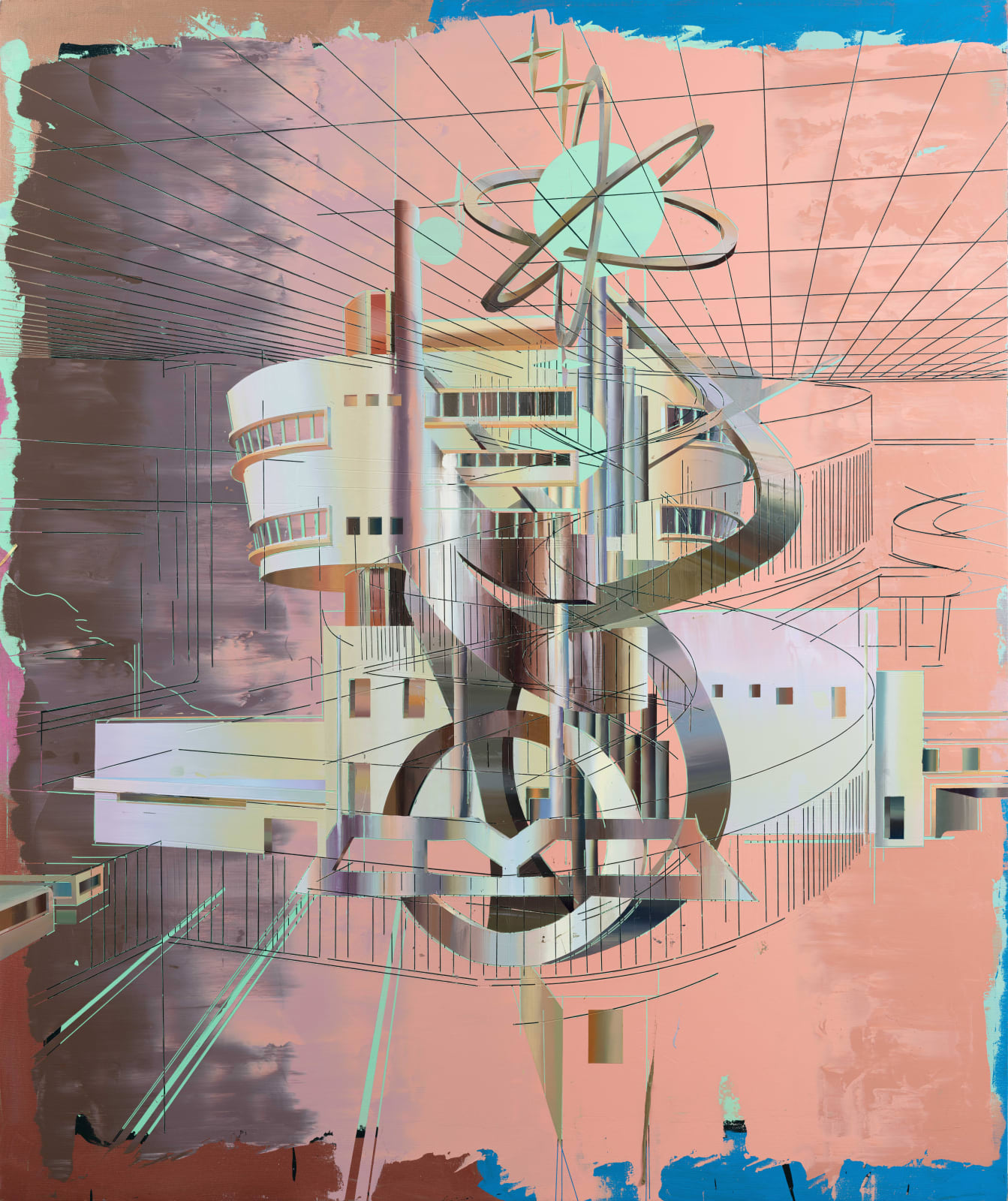


Cui Jie
The Peak Tower, 2019
Acrylic on canvas
250 x 210 cm
98 3/8 x 82 5/8 in
98 3/8 x 82 5/8 in
Copyright The Artist
Further images
In 1972, Hong Kong architect Chung Wah-nan designed the first Peak Tower. Its appearance was inspired by a combination of the shape of a Ting (a prehistoric bronze vessel); a...
In 1972, Hong Kong architect Chung Wah-nan designed the first Peak Tower. Its appearance was inspired by a combination of the shape of a Ting (a prehistoric bronze vessel); a traditional incense burner, and the ancient Chinese formation of a city gate complete with a watch tower. Upon completion, the tower became known among rich locals as “Lou Can Ting”, literally translated as the Fool’s Tower, mocking the mostly poor residents of the city below who would climb all the way up the vertiginous hill just for the view.
The two public sculptures in this painting were found across southern Chinese cities during the 1980s and 1990s. As the Economic Reform goes, signs and symbols were massively produced to express the love of science and knowledge.
The first layer of the painting is a matrix of black lines representing a footbridge in Beijing - Cui Jie’s favourite footbridge. Cui flipped its cyclical staircase upside-down to make the ground part of the sky.
The two public sculptures in this painting were found across southern Chinese cities during the 1980s and 1990s. As the Economic Reform goes, signs and symbols were massively produced to express the love of science and knowledge.
The first layer of the painting is a matrix of black lines representing a footbridge in Beijing - Cui Jie’s favourite footbridge. Cui flipped its cyclical staircase upside-down to make the ground part of the sky.


